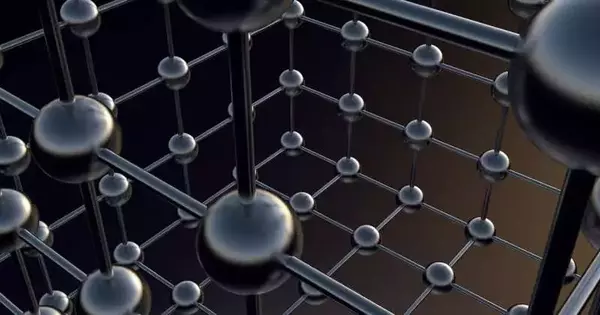University of Wisconsin-Madison chemical engineers have created a model of how catalytic reactions work at the atomic scale, a development they consider a breakthrough in computational chemistry research. Given that 90% of the products we use in our daily lives are produced, at least in part, through catalysis, this understanding might enable engineers and chemists to create more effective catalysts and fine-tune industrial processes—possibly with enormous energy savings.
Without changing themselves, catalyst materials speed up chemical reactions. In addition to producing pharmaceuticals, plastics, food additives, fertilizers, green fuels, industrial chemicals, and many other products, they are essential for the refinement of petroleum products.
Although scientists and engineers have spent decades perfecting catalytic reactions, they are currently unable to directly observe those reactions at the high temperatures and pressures frequently associated with industrial-scale catalysis. As a result, they are unable to fully understand what is happening on the nano- and atomic scales. With potentially significant implications for industry, this new research aids in solving that mystery.
“If you reduce the temperatures at which you have to run these reactions by just a few degrees, there will be a massive reduction in the energy demand that we face as humanity today,”
Manos Mavrikakis, a professor of chemical and biological engineering
In actuality, only three catalytic reactions—methanol synthesis, ammonia synthesis for fertilizer production, and steam-methane reforming to produce hydrogen—consume close to 10% of global energy.
The study’s principal investigator, Manos Mavrikakis, is a professor of chemical and biological engineering at the University of Wisconsin–Madison. “If you reduce the temperatures at which you have to run these reactions by only a few degrees, there will be an enormous decrease in the energy demand that we face as humanity today,” he says. “You can reduce all of these processes’ environmental impact by reducing the amount of energy required to run them.”.
In addition to Mavrikakis, postdoctoral scholars Lang Xu and Konstantinos G. Papanikolaou, along with graduate student Lisa Je, published news of their advances in the April 7, 2023, issue of the journal Science.
The engineers at UW-Madison create and employ potent modeling techniques in their studies to simulate catalytic reactions at the atomic scale. In this study, they examined reactions involving transition metal catalysts in nanoparticle form, which include substances like platinum, palladium, rhodium, copper, nickel, and other substances crucial to industry and renewable energy.
According to the current rigid-surface model of catalysis, the tightly packed atoms of transition metal catalysts provide a 2D surface that chemical reactants adhere to and engage in reactions on. When enough pressure, heat, or electricity is applied, the bonds between atoms in the chemical reactants break, allowing the fragments to recombine into new chemical products.
The general belief is that these metal atoms are tightly bound to one another and merely serve as “landing spots” for reactants.
According to Mavrikakis’s modeling, the answer is yes. The energy provided for many catalytic processes to take place is enough to break bonds and allow single metal atoms (known as adatoms) to pop loose and start traveling on the surface of the catalyst. These adatoms combine into clusters, which serve as sites on the catalyst where chemical reactions can take place much easier than on the original rigid surface of the catalyst.
Using a set of special calculations, the team looked at the industrially important interactions of eight transition metal catalysts and 18 reactants, identifying energy levels and temperatures likely to form such small metal clusters, as well as the number of atoms in each cluster, which can also dramatically affect reaction rates.
Their experimental collaborators at the University of California, Berkeley, used atomically-resolved scanning tunneling microscopy to look at carbon monoxide adsorption on nickel (111), a stable, crystalline form of nickel useful in catalysis. Their experiments confirmed models that showed various defects in the structure of the catalyst can also influence how single metal atoms pop loose as well as how reaction sites form.
Mavrikakis says the new framework is challenging the foundation of how researchers understand catalysis and how it takes place. It may apply to other non-metal catalysts as well, which he will investigate in future work. It is also relevant to understanding other important phenomena, including corrosion and tribology, or the interaction of surfaces in motion.
“We’re revisiting some very well-established assumptions in understanding how catalysts work and, more generally, how molecules interact with solids,” Mavrikakis says.
Manos Mavrikakis is Ernest Micek Distinguished Chair, James A. Dumesic Professor, and Vilas Distinguished Achievement Professor in Chemical and Biological Engineering at the University of Wisconsin–Madison. Other authors include Barbara A. J. Lechner of the Technical University of Munich and Gabor A. Somorjai and Miquel Salmeron of the Lawrence Berkeley National Laboratory and the University of California, Berkeley. What everybody has assumed is that metal-metal bonds remain intact during the reactions they catalyze,” says Mavrikakis. “So here, for the first time, we asked the question, ‘Could the energy to break bonds in reactants be of similar amounts to the energy needed to disrupt bonds within the catalyst?'”.
More information: Lang Xu et al, Formation of active sites on transition metals through reaction-driven migration of surface atoms, Science (2023). DOI: 10.1126/science.add0089. www.science.org/doi/10.1126/science.add0089





